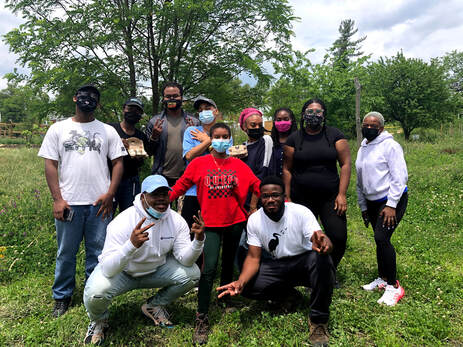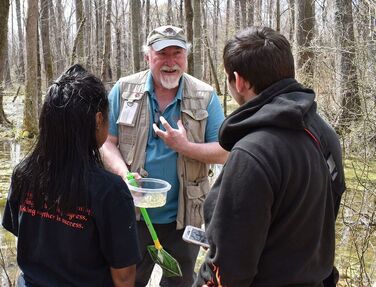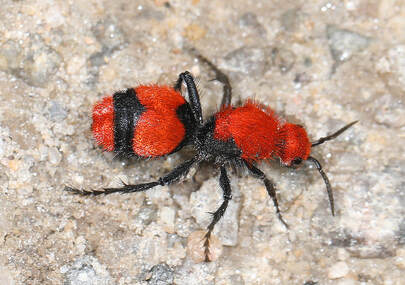All VMN volunteers are asked to log on to Better Impact, our new volunteer management system, without delay! As of today, 2,166 VMN volunteers of 3,200 on the rosters (68%) had logged in to the system. Only 55% of enrolled volunteers have logged hours in the system. Only 40% had completed any other parts of their profile, such as the emergency contact information, demographic information, and/or agreements and acknowledgements.
Please take a few minutes to log on to update your profile, document your service, and see the most up-to-date information on approved activities for your chapter! If you are unsure of your login information, please contact your chapter’s membership chair or volunteer management system administrator so that they can help you.
Once you have logged on, we recommend taking these actions:
- Update your contact information. Under the “My Profile” tab, go to “Contact Information”. Fill that out as completely as possible. Only the system administrators for your chapter and at the state level can see your information there, so you are not sharing it with the world or even the whole chapter.
- Update other information. Also under the “My Profile” tab, go to “Additional Information”. Please fill in the boxes under Demographic Information, Emergency Contact, Agreements & Acknowledgements. In addition, under Milestones, we ask you to indicate whether you prefer to receive or not receive milestone and recertification pins.
- Update your interests and availability. Your choices here can be changed at any time and will not restrict you to what activities you see, only help you find activities that you are interested in. Again under the “My Profile” tab, go to “Interests”. Here you can indicate the general kinds of volunteer activities you would like to do. This will help leaders be able to match volunteers to specific opportunities. Next under “My Profile”, go to “Availability”. Indicate your general availability for volunteering. By entering even your best guesstimates, it will help you find activities on those days.
- Review the approved activities for your chapter. Under the “Opportunities” tab, click the Opportunities List to see what volunteer activities are approved in your chapter. The lists for many chapters have changed compared to the old system, so if there’s a project you have been doing, check to make sure you can find it on the list and what category it is under. If you can’t find it, it may no longer be active or an approved activity.
- Enter your service and CE hours. Under the “Hours” tab, enter the dates, hours, activity, and other requested information for any service and continuing education you have done in 2021. Make sure that any CE hours are always entered into the CE Category, or we will not be able to distinguish them from service hours. If you see a box to indicate “Impacts” when you enter your service, please fill that out so that we can know more about the positive impacts you are making. By the way, VMN volunteers are expected to document their service regularly, not just at the end of the year!
- View your service and CE hours. Want to see where you are at with volunteer service this year? Go to the “Reports” tab. Scroll down to the Hours and Feedback Report. Enter the date range you want to see and click “View Report”. That will show all hours (both service and CE), so you’ll need to subtract the CE hours from the total to know your service hours. Note that the hours total at the top on your dashboard does not accurately reflect VMN service hours, so use the report instead.
There is more you can do on Better Impact, but we think these tasks are the basic ones of most importance for every volunteer to do.
You can find additional instructions for using Better Impact, including a video demonstrating exactly what to do, on the Volunteer Management page of our website.
 Black By Nature participants, the first all-Black cohort of Maryland Master Naturalists. Photo by Diamon Clark.
Black By Nature participants, the first all-Black cohort of Maryland Master Naturalists. Photo by Diamon Clark.
All are invited to attend the VMN Diversity & Inclusion in Natural Resource Education webinar series this fall. Thanks to a grant from the Virginia Environmental Endowment, we are able to bring in some excellent external presenters. Visit our website for full details and registration links. The first one is coming up soon!
- Monday, November 1, 7:00-9:00 pm: Connecting Black, Indigenous, and People of Color to Nature in Baltimore with Diamon Clark (Black by Nature) and Atiya Wells (Backyard Basecamp, Inc.)
- Thursday, December 2, 7:00-8:00 pm: Environmental Justice in Virginia with the Virginia Department of Environmental Quality Office of Environmental Justice
- Thursday, December 9, 6:30-8:00 pm: Birdability: Because birding is for everybody and every body! with Freya McGregor (Birdability)
Also, mark your calendars for an additional webinar from the VMN Diversity & Inclusion Working Group. On Tuesday, November 9, 6:30-8:30 pm, members of the VMN Diversity & Inclusion Working Group will share our developed goals and action items to increase diversity and inclusion in the VMN program and the educational programs our volunteers provide. It will be part of our Leadership Month activities for chapter leaders, but all VMN volunteers are welcome. The link to register was sent to all VMN volunteers via email.
 VMN volunteer Harry Puffenberger shares his enthusiasm for vernal pools with students. Photo by Maria Cannata (VMN Central Rappahannock Chapter).
VMN volunteer Harry Puffenberger shares his enthusiasm for vernal pools with students. Photo by Maria Cannata (VMN Central Rappahannock Chapter).
VMN volunteers who like doing education & outreach of any kind are invited to join our new Educators Bureau.
The Educators Bureau will be an up-to-date listing of VMN volunteers willing to teach other VMNs, give presentations for community groups, lead nature walks, lead environmental education activities for youth, and any other form of educating related to natural resources. Our goal is to increase VMN engagement in Education & Outreach, help our program reach new audiences, and help us respond better to requests for presenters.
If you are a VMN interested and willing to teach others and lead educational programs on natural resource topics, we invite you to complete our Educators Bureau form. By completing the form, you aren’t committing to any specific opportunity at this point but simply indicating your willingness to be contacted if an opportunity arises that fits your particular profile. On the form, we provide more details on how your information will be used and how you can update your information later. If you have questions, please contact Michelle Prysby, VMN Program Director.
We would like to get a baseline sense for the current size and scope of our VMN educator pool, so we ask that if you are (1) a VMN volunteer and (2) willing and able to lead any kind of educational program as part of your VMN volunteer service, please complete the form by November 22.
It’s Election Season! No, I’m not talking about politics. I’m talking about the huge need we have for VMN volunteers to serve in all sorts of leadership roles in their chapters. And we need you!
A little background…
The VMN program is set up to be chapter-based. Some great positives of this structure are that our groups can better tailor themselves to fit the circumstances of their local communities, that we’ve been able to grow and sustain the program across Virginia for 16 years, and that VMN volunteers have been able to take a lot of ownership over their learning and service. Being chapter-based has meant our local groups can create their own projects to fill needs that they see.
Another aspect of this structure is that we need volunteers to help govern the chapter and help run some of the day-to-day aspects of the program locally. I suppose some might consider this a negative aspect of the chapter-based design, but I consider it an opportunity! By being on a chapter committee or serving on the board, volunteers make new connections with others in their chapter, develop leadership skills, and are instrumental in helping to make the VMN program valuable and impactful in their community.
A plea…
You don’t need to have any experience (other than being a current VMN volunteer). You need a willingness to learn, to collaborate with others, and to communicate. If you have found value yourself in being a VMN volunteer, this is a way you can help others get a positive VMN experience too. Without VMN volunteers to lead (whether as an officer, chair, board member, or committee member), then the VMN chapter disappears and the program doesn’t exist in the community anymore.
Don’t worry if you are relatively new to the program or don’t have a great deal of leadership experience. Those who have gone before you have established some great processes, and I know they are willing to mentor as much or as little as you wish. There may be opportunities to shadow another chapter leader for a year to learn the ropes. And, you have the full support of the VMN state office. We are available when you have questions or need assistance.
Won’t you please step up? You will make all the difference!
–Michelle Prysby, VMN Program Director
 Velvet Ant “Cow Killer” – Dasymutilla occidentalis, Occoquan Bay National Wildlife Refuge, Woodbridge, Virginia. Photo by Judy Gallagher, VMN Merrimac Farm Chapter. CC BY 2.0.
Velvet Ant “Cow Killer” – Dasymutilla occidentalis, Occoquan Bay National Wildlife Refuge, Woodbridge, Virginia. Photo by Judy Gallagher, VMN Merrimac Farm Chapter. CC BY 2.0.
By Alfred Goossens, VMN-Rivanna Chapter
A number of Virginia Master Naturalists have been working for a few years on The Socrates Project – Poisonous Plants in Virginia. The 2nd Edition was published in December 2020 and was very well received by the press and by the audience. This publication covers 25 poisonous plants that grow in the wild in Virginia. The link where you can see and download this publication is https://med.virginia.edu/brpc/socrates.
We are pleased to announce that we have started a new project: The Cleopatra Project – Poisonous and Venomous Animals in Virginia. It has been decided by the team that we will follow a similar layout with The Cleopatra Project as we have followed with The Socrates Project, meaning text with a lot of pictures.
We currently have a strong Cleopatra Team from a number of VMN Chapters, but we could use 2 or 3 more capable VMN members. We are looking for people who could help with doing research and writing the data sheets of the animals on our list. It would be of great help if we could find members with some entomology experience. If you are interested to participate in this great project please contact the project leader at Cleopatra.Socrates@gmail.com.
In addition we are looking for VMN volunteers from any chapter to submit pictures of all the animals that we will be writing about. Please note that the Virginia Herpetological Society has kindly offered us photos of venomous snakes, so we are well covered here.
At this moment we are evaluating if the following animals should be included in The Cleopatra project:
- Algae bloom
- Ants: Red and Fire
- Caterpillars: Saddle-back, Puss caterpillar, Hagmoth, Hackberry leaf slug, Io moth Caterpillar and the Buck moth caterpillar.
- Eastern Newt
- Jellyfish
- Snakes: Eastern Copperhead, Northern Cottonmouth and the Timber Rattlesnake
- Spiders: Southern black Widow and the Northern Black Widow
- Scorpion: Southern Devil
- Toads: Eastern American Toad, Eastern Spadefoot Toad, Fowler’s Toad, Oak toad and the Southern Toad
- Wasps, Hornets and Yellow Jackets.
NOTE: An updated list of photographs being sought and information on how to submit is available here.
We are working closely together with the Medical Toxicology Department of the University of Virginia, our partner in this project, with the selection of the animals for this publication. They will eventually also conduct the peer review of the text of the publication with regard to toxicology, poisoning symptoms and other medical issues or concerns
When The Cleopatra Project is well on the road the team will start working on the 3rd Edition of The Socrates Project – Poisonous Plants in Virginia. In addition to the 25 plants that are in the 2nd Edition, we have received reports of at least 12 additional poisonous plants that grow in the wild in Virginia.
The Socrates Project – Poisonous Plants in Virginia has become a resounding success for the Virginia Master Naturalists program and the team will make sure that The Cleopatra Project – Poisonous and Venomous Animals in Virginia will do the same.
For any questions and suggestions please contact:
Alfred Goossens
Project leader: The Socrates Project and The Cleopatra Project


